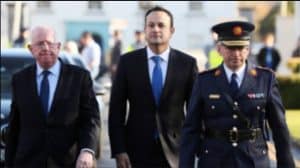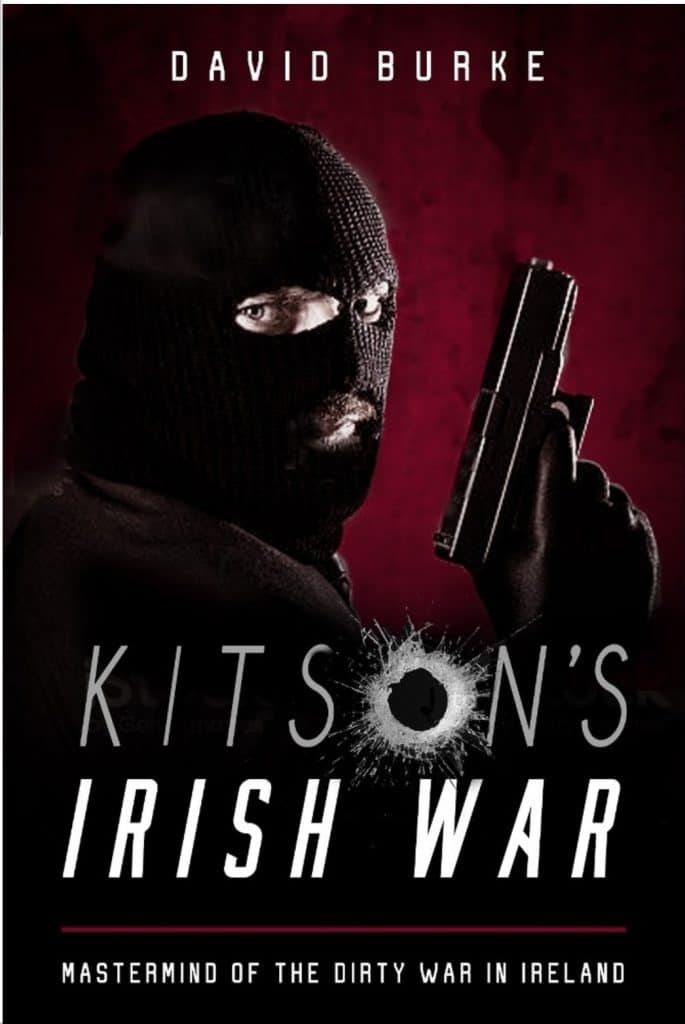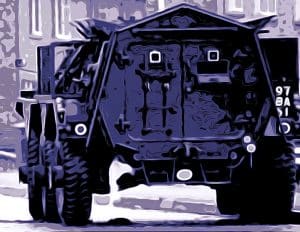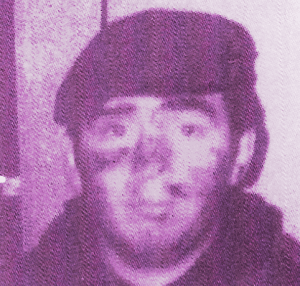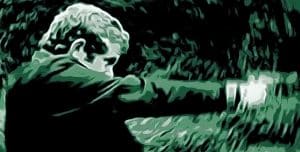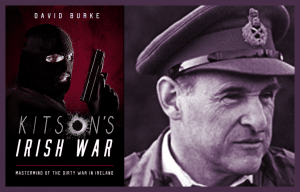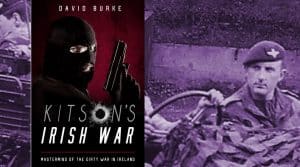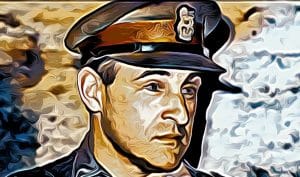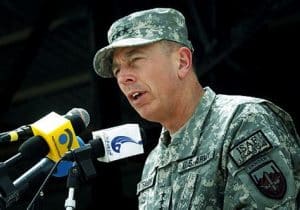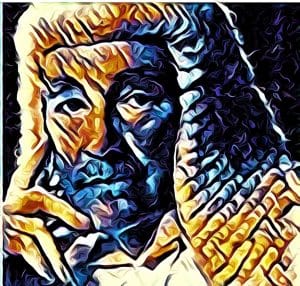Introduction.
In the very early 1970s, Brigadier (later General, Sir) Frank Kitson and his colleagues decided to confront the IRA, and only the IRA. Kitson’s superior, Lord Michael Carver, revealed in his memoirs that “a direct armed clash between the army and the [Loyalist Ulster Defence Association], when the former was already facing the IRA, was not a situation that anybody wished to provoke”.
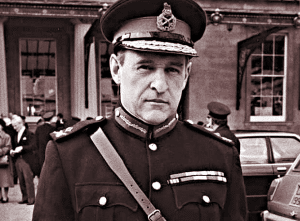
What Carver did not reveal was that the UK’s military, police and civilian intelligence services proceeded to exploit the UDA, and other Loyalist groups, as proxy assassins. This has become known as ‘collusion’, i.e., the British state used Loyalists to murder on their behalf.
Paper Trail, a non-sectarian charity which helps the victims and families of people killed and injured during the Troubles, has unearthed records which shine a light on the co-operation which flourished between the British Army and the UDA in the 1970s. They prove that the State was in receipt of intelligence about the criminal activities of the UDA.
Clearly, the State had informers inside the UDA’s death squads.
The RUC and British Intelligence did not act on the intelligence to stop the torture and murder. The tortures took place in the UDA’s horrific ‘Romper Rooms’.
What now follows is largely an extract from my 2021 book, ‘Kitson’s Irish War’. It relates primarily to Albert ‘Ginger’ Baker, an alleged British Army deserter who infiltrated the UDA. He became a member of the UDA’s most notorious assassination squad of the time.
Baker’s true loyalty was to the British army. He was – or became – a deep cover penetration agent after he “deserted” from the British army and returned home to Belfast. His codename was ‘Broccoli’.
Baker features heavily in the Paper Trail revelations.
It is now becoming increasingly clear that British officials and RUC officers were guiding the UDA murder gangs through agents such as Baker.
The Paper Trail revelations can be found here: https://www.papertrail.pro/british-soldiers-british-agents-uda-romper-rooms/
1. Baker’s handlers walked free.
Baker is still alive.
He was convicted of some of his crimes in 1973. He went to prison. His intelligence handlers walked free.
He has spoken – and written – extensively about his crimes. He was once prepared to co-operate with the Gardai in the resolution of crimes in the Republic. The late Laurence Wren, Garda Commissioner, 1983-87, and others, failed to exploit Baker’s offer
The RUC and PSNI have covered up the full truth about the Baker case for more than half a century.
Frank Kitson was the instigator and architect of State-Loyalist collusion. Baker was among the first wave of State-Loyalist killers. Kitson is being sued by one of Baker’s murder victims, Patrick Heenan.
Risi Sunak’s legacy legislation – if passed – will let Kitson and the British Establishment off the hook and copper fasten the collusion cover-up.
2. Baker and the Dublin bombing of 1972.
In 1976 members of Baker’s family implicated him in the bombing of Dublin in December 1972. It caused the death of two CIE employees.
Baker transported explosives during a preliminary stage of the attack. He took them to Derry.
Baker was a known associate of a senior UDA figure in Derry. His name also appears in the Paper Trail files. The senior UDA figure bears a passing resemblance to one of the Dublin bombers. The gardai prepared a photofit of the bomber. Larry Wren, the head of C3, Garda Intelligence, 1971-79, failed to circulate or publish the photofit. The suspect is still alive.

Sunak’s legislation will also undermine any possible future inquiry into that attack.
In a functioning democracy, Paper Trail’s discoveries would instigate an inquiry into State collusion with paramilitaries.
Paper Trail appears to have found further files which they have yet to release which will cast further light on Baker and his associates.

3. Garda Commissioner Drew Harris.
Garda Commissioner Drew Harris may have seen the British Intelligence files on the 1972 double murder in Dublin in his former capacity as the RUC/PSNI liaison officer with MI5. When Harris was appointed as Garda Commissioner, Fine Gael assured the public his former role as a senior RUC-PSNI officer would not generate a conflict of interest.
As things stand, the Gardai have no interest in Baker or the resolution of the 1972 attack.
This is not the only severe conflict of interest of interest involved in the appointment of Commissioner Harris. A former British military intelligence operative known by the pseudonym, Sam Rosenfeld, has divulged that a senior Irish government figure has served as an agent of British intelligence. Rosenfeld was attached to the clandestine Joint Support Group (JSG) and had some direct dealings with the Irish agent. The JSG carried out its duties on behalf of MI5.
Rosenfeld was once brought inside Leinster House by a senior official who worked for London. Last December Rosenfeld told the Irish News:
I will tell you what they (British intelligence) are super, super, super, sensitive about, they have somebody still working, and I am assuming there’s many still working in the Irish Republic, but one of them holds a very senior position in the Irish government.
Rosenfeld added that he recently that he had
looked and they are now even in a (more) senior position than they were previously and they still work for the British government, i.e., the army.
Suspicion as to the identity of the Leinster House agent is gathering around one particular individual, a person active in the political sphere.
For further details see: https://coverthistory.ie/2022/12/22/his-and-her-majestys-spies-in-the-dublin-government/
4. Tuzo and his UDA allies
A key date in the Baker case is 9 July 1972, when Maj-Gen. Harry Tuzo submitted a paper suggesting that the British government should “acquiesce in unarmed UDA patrolling and barricading of Protestant areas. Indeed, it was arguable that Protestant areas could be almost entirely secured by a combination of UDA, Orange Volunteers and RUC.” He also suggested that they be allowed retain weapons in the districts they controlled. Tuzo’s views were aligned to those outlined in Volume III of the MoD’s 1969 Land Operations which had advocated, “Liaison with, and organisation of, friendly guerrilla forces operating against the common enemy”.

5. The murder of Paddy Heenan.
On 1 February 1973, Eugene ‘Paddy’ Heenan, a fifty- year-old married Catholic with five children, became the victim of an appalling example of an operation involving ‘friendly guerrilla forces’. Heenan, a builder, was on his way to work on a bus with fourteen colleagues when it drew to a halt at Kingsway Park to allow a man with what appeared to be a sore leg sore leg shuffle across the road. Suddenly, he turned and threw a paint pot at the bus while an accomplice broke a window with a hammer. After that, Albert ‘Ginger’ Baker lobbed a grenade through the broken glass killing Heenan and injuring many of his fellow passengers.
6. Baker and British military intelligence
In July 1976 members of Baker’s family revealed to the Sunday World that he had had a relationship with British military intelligence. Recently a former military officer who worked at Thiepval Barracks and read some files relating to him has confirmed that he was indeed a British agent designated with the codename ‘Broccoli’. What puts the matter beyond dispute is that in the 1980s Baker admitted to Ken Livingstone, former MP and lord mayor of London, that he had worked with undercover British military officers.
Born in East Belfast, Baker earned his nickname ‘Ginger’ after the drummer of the rock band Cream. In March 1970, at the age of nineteen, he joined the Royal Irish Rangers in Belfast. He was sent for training in Ballymena, where he won prizes as a crack shot. From there he went to Warminster in England, where the Regiment’s 2nd Battalion was based.

He returned to Belfast at some stage in 1972 to find a flourishing UDA taking control of Loyalist parts of Belfast. At his trial a year later, his counsel told the court that: “He got into the company of UDA men and found that they had plenty of money. He was tempted to get money and joined the organisation.” He gained entry to the UDA by impressing some of its members in Belfast with his bravado during a bar robbery. He also exploited his army experience to train UDA volunteers. Soon he became a member of the East Belfast UDA’s so-called No. 1 Assassination Team led by Ned McCreery. The man in charge of UDA assassinations was its vice chairman, Tommy Herron, a former security guard, who was a leading member of its Inner Council. Herron was acting in liaison with British military intelligence, probably an offshoot of the undercover unit Kitson had set up in NI, the MRF or some other covert branch of intelligence controlled by 39 Brigade in conjunction with the RUC. Herron, who had a criminal record, was given a legal permit to carry a gun, ostensibly to protect himself.
7. Baker and Tommy Herron.
Baker served as a bodyguard to the UDA’s ruling ‘Inner Council’ when it met. He also protected Herron who sat on the body. By 1972, Herron enjoyed a high profile, often appearing on television. He ran for election as a Vanguard Unionist candidate in 1973. Baker has claimed that RUC officers provided Herron with guns, information and other assistance.

8. Baker’s handwritten account.
In a handwritten account Baker produced in 1986, he revealed that after his arrest in 1973, he had received a visit “from Chief Insp. Carlyle and Det. Insp. Hamilton. I was questioned about the Vice Chairman of the Ulster Defence Association, Tommy Herron. I informed them that Tommy was the man directly responsible for all sectarian assassinations in and around Belfast as he was the person [whose][/whose] authority these assassinations were sanctioned by. You must remember that I am not [only][/only] speaking about the assassinations I was involved in but all sectarian assassinations of Catholics.”
Baker described the activities of his gang as having included “sectarian assassinations; armed robberies; riots; [and][/and] the training of young Protestants to facilitate them to become the next generation of loyalist assassins …”
9. The Ken Livingstone MP interview, 1988.
In July 1988 Ken Livingstone interviewed Baker. During the interview, he explained how he had been recruited:
A.B. I have never mentioned it to anyone before but as far as I and other members of the UDA were concerned, we were operating for the UDA, but we had close links with the British Intelligence Services.
K.L. Do you remember any names?
A.B. M was an operator. He was working for the British Intelligence Services.
K.L. What makes you so certain of that?
A.B. It was Tommy Herron, he told me and a couple of others to contact the British Intelligence controller who was a man named ‘B’. We only knew his name as ‘B’, but the other one was M.
K.L. Did you ever meet them?
A.B. I met ‘M’ and we used to go to the centre of Belfast, then York Street, to a telephone kiosk and he phoned ‘B’, the controller. Other officers8 in the inner circle of the UDA contacted ‘B’.‘B’ was known to Baker as ‘Capt. Bunty’.
While no such person as ‘Bunty’ was listed as serving in Belfast at the time, there was a captain with a remarkably similar name who was listed as a ‘Special Regular Officer’ with the Army Education Corps.

10. The Philip Anthony Faye murder.
Baker’s first murder took place on 18 August 1972. Philip Anthony Faye, a twenty-one-year-old waiter, had been serving the Inner Council, at the Girton Lodge Hotel. He originally came from County Cavan in the Irish Republic. During his interview with Livingstone, Baker said:
So the Inner Council was in this room and Faye came in with drinks. Tommy Herron found out the geezer was a Catholic and ordered his assassination in case he’d overheard anything. I went down to Island Street and assassinated him.

Faye was sleeping when Baker knocked on the door of his home at Island Street in the predominately Protestant East Belfast at about 3 a.m. After he opened it, Baker asked if he was a Catholic. When he replied in the affirmative, Baker told him to turn round and shot him twice in the back of the head with his .32 Browning automatic. As he lay dying on the ground, Baker fired three more rounds into the area below his ear.
Baker and his associates became known as the ‘Romper Room Gang’ after the torture chambers to which they took their victims. The venues were named after a television programme for children. Typically, they were located inside disused buildings, lock-up garages or rooms above pubs and drinking clubs. Once inside, a victim would be beaten and tortured as a prelude to murder. Baker was an active participant in a string of these gruesome murders. Davey Payne, a UDA brigadier, started this practice of kidnap, torture and murder.

11. The Paul McCartan murder.
The second murder involving Baker took place on 26 September 1972 when Paul McCartan, a fifty-two-year-old barman was abducted by a UDA patrol as he made his way along the Newtownards Road in East Belfast. The gang went to a UDA club, where he was questioned about his religion. He was tortured, hooded and shot three times in the head by Baker.
12. The James Patrick McCartan murder.
The next assassination took place on 3 October 1972. It was purposeful as opposed to random. The victim was James Patrick McCartan, a twenty-two-year-old forklift truck driver. Baker told Livingstone:
He was interrogated. He was supposedly in the IRA. This was information passed on by Special Branch and CID officers to a UDA commander. We were sitting in a bar when we were told to drive off to the Park Avenue Hotel. We took him out of the hotel, interrogated him and then assassinated him.
‘C’ of CID and [the conservative=”” party=”” secretary=”” of=”” state=”” william=””][/the] Whitelaw’s special squad used to give us files. They were like a deck of cards. They were all joined together and there were photographs of every Republican. I used to sit and drink with ‘C’. Half the assassinations in Northern Ireland in the early 1970s wouldn’t have been committed without RUC backing. Half the people who died in those assassinations would be alive today if the RUC hadn’t supported the assassination teams. The RUC knew the assassination teams – every single one of them.
What happened to McCartan was far more gruesome than Baker’s description suggests. McCartan had been at a disco at the Park Avenue Hotel. When he left, he was in the company of a girl. They were punched and kicked by Baker’s gang who had lain in wait for him outside, but the pair managed to retreat back inside. McCartan tried to leave a while later with a Protestant friend, but Baker and his goons set upon him again. One of them told his Protestant friend: “You have nothing to worry about, we [just][/just] want McCartan …” before dragging him away.
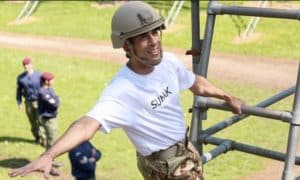
Ned McCreery ordered the gang to take McCartan to a club with a ‘Romper Room’. One was available at the back of a UDA club in Clermont Lane. According to testimony at Baker’s trial, several UDA members and their girlfriends arrived to drink and watch the slow torture of McCartan. He was conveyed around a number of ‘romper rooms’ in the Newtownards Road area – specifically in Finmore Street and Clermont Lane that night. He was stripped naked, hung up by the ankles and subjected to lengthy torture sessions at each club. At one stage, he was kicked and beaten with a pickshaft, while a dagger was used to stab him in the hands and thigh. All told, he received approximately 200 stab wounds. At one point during his ordeal, he was threatened with castration and dropped head first from the ceiling. McCreery finally gave Baker a pistol and told him to kill McCartan. The gang tied his hands behind his back and placed a bag over his head. He was taken to the Connswater River, where Baker shot him dead. “I was probably asked because I had already killed one man with a pistol, or maybe because I had training with small arms and the British army.”

Baker said later. McCartan’s unrecognisable body was found on waste ground. Baker maintained McCartan was a wanted Republican based on the RUC information. In reality, he had no paramilitary connections.
13. The Patrick Benstead murder.
McCreery was involved in another killing on 2 December, 1972. Baker was not part of it this time. The victim was later described as ‘retarded’, a thirty-two-year-old Catholic called Patrick Benstead from the Short Strand in Belfast. The coroner described it as the most horrifying he had ever dealt with. Evidence was given that his naked body had been found on the street with a cross burned onto his back. It had been put there with a hot iron. The word ‘IRA’ was burned onto him. There were other burn marks on his body, hands and feet. He was shot through the head after his ordeal.
The guns that Baker claims the RUC supplied to his gang came from Mountpottinger RUC station in the Short Strand, Belfast. Some of them were used during an attack on the Red Lion Bar near the Albert Clock in the centre of Belfast, which was carried out in the hope of assassinating a suspected IRA man. However, a police Land Rover had chanced by and the attack was abandoned. The weapons were handed to an RUC detective who was waiting in a civilian car in a nearby carpark. From here, Baker claimed, the detective drove the weapons back to East Belfast, where he returned them to Baker and his men. They had travelled across the city without any fear of being stopped and searched. Baker told Livingstone:
… the guns were taken and put in ‘C’s car and he drove them through the police and army checkpoints back to East Belfast where he handed them back to us. The assassination was carried out later using police guns and Sterling submachine guns.
14. Colin Wallace.
Adding general credence to these claims, Colin Wallace recalls ‘a number of allegations in the 1970s that the RUC gave surrendered firearms to Loyalists, including William McGrath’. McGrath was involved with the UVF, UDA and ran his own paramilitary group called Tara.

The RUC, MI5 and MI6 used two of the hotels mentioned above, the Park Avenue and the Girton Lodge, as part of a ‘honey trap’ operation involving young teenage boys from Kincora Boys’ Home. A future DUP parliamentarian was recorded in a bedroom on the first floor of the Park Avenue Hotel.

Baker told Ken Livingstone that the UDA Inner Council was aware of the Kincora operation and kept the residence under observation.
15. Court-martial
By the end of February 1973, Baker had become disillusioned with the UDA and returned to his regiment in England where he was later court-martialled and discharged.

16. Maj.-Gen. Frank King,
Declassified British Army records help to confirm that Baker was a contact, if not a fully-fledged agent, of military intelligence. On 24 May 1973, Maj.-Gen. Frank King, the new GCO NI, met with the vice chief of the General Staff (VCGS), Sir David Fraser, in London. The record of the meeting reveals that: “We have now got good intelligence on [Tommy][/Tommy] and the Protestant extremists.” As a bodyguard to the Inner Council, Baker was ideally placed to supply this information. The fact that the army had ‘good intelligence’ on Herron indicates that they did not control him. Hence, he appears to have been more an ally than an agent. The document also reveals that Fraser brought GOC King ‘up to date and discussed the problem of the protection of the “source of their information”, someone designated “Agent Broccoli”.’ Again, Baker perfectly fits the bill as the ‘source’. He certainly would have required ‘protection’ from his erstwhile UDA colleagues who by then must have suspected he was a spy after he disappeared from Belfast.
What King and Fraser did not know when they were having their discussion on 24 May 1973, was that Baker had, or was about to, walk into Warminster police station and confess to his crimes. The Warminster constabulary alerted the RUC and two RUC officers at Taunton police station interviewed Baker. After this, he was taken back to Belfast and held at Mountpottinger RUC Station, where he was questioned further.
17. Collusion and the RUC elite.
Presumably, only a select number of the RUC knew about the use of Loyalist terrorists as allies and proxy assassins on behalf of British military intelligence. There was no love lost between many in the RUC and the UDA. The first RUC officer to be killed during the Troubles was VictorArbuckle who perished during a Loyalist riot in October 1970 involving many figures who became UDA leaders. Also, in the early 1970s, the UDA and RUC engaged in a number of violent street confrontations. Against this background, the RUC commenced the investigation of Baker’s case in a normal fashion.
18. Mountpottinger RUC station in Belfast.
After his arrest, Baker made a number of allegations of collusion between named members of the RUC and Loyalist paramilitaries. These involved the theft of weapons by RUC officers from Mountpottinger RUC station in Belfast which were handed over to the UDA. In his handwritten account Baker described how, when he was being brought to Chichester Street Magistrates Court on one occasion, he:
noticed a U.D.A. deep penetration officer who was also a member of the [RUC][/RUC] Inner Circle Murder Squad. I turned back into my cell and pushed the door to. Sergeant McCoy observed that I was worried and agitated … I informed him that one of his officers was a U.D.A. man and I was afraid of being driven into U.D.A. ambush. Well he was thunder-struck and told me not to worry …
Baker’s handwritten account states that, ‘This officer is B__ C____, who associated with Jim McC____ a lieutenant in the U.D.A … Chief Inspector C_____ impetuously told me to keep quiet on this matter and say nothing to anyone else about it’.
When he returned to Crumlin Road jail, Baker received a visit from Sgt McCoy and another RUC officer who had been a ‘schoolfriend’. During the encounter he named another RUC officer who was colluding with the UDA while McCoy was questioning him “about these missing weapons and asked me how I knew, I informed him, I [had seen=”” the=””][/had] RUC officer hand them over to Tommy Herron the Vice Chairman of the Ulster Defence Association at UDA headquarters. I was then asked by Sergeant McCoy if I would speak to the RUC corruption squad and I said I would [do so=””][/do] willingly. Later I received a couple of visits from the RUC corruption squad and made a statement about Insp Mc_____ an RUC uniformed officer who handed over a sterling submachine-gun in the UDA headquarters to Tommy Herron. I do not think any action was ever taken against Insp Mc____…”
The picture that emerges here is one of a regular RUC team which continued to investigate his crimes, until they encountered a force more powerful than them. Such a power could have emanated from people such as King, Fraser and their subordinates, not to mention MI5 and MI6.
19. The murder of Tommy Herron
In August 1973, Baker was charged with eleven robberies, a number of firearms offences and the murder of four Catholics.
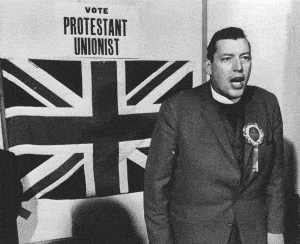
On 16 September 1973, a loose intelligence end was disposed of when Loyalist opponents murdered Herron as part of an internal UDA feud. Ian Paisley led prayers outside his home on the day of his funeral. According to Baker’s handwritten account:
I also informed the RUC that Tommy Herron was to be assassinated before I was sentenced … I did not tell the RUC how I knew about his pending assassination nor was my evidence ever mentioned during the Coroner’s Court Hearing.

20. Baker’s trial.
Baker’s trial was the first to be heard before the Diplock courts which sat without juries. He pleaded guilty and, on 15 October 1973, was given a life sentence with a minimum of twenty-five years to be served. He was immediately taken to Musgrave Park Military Hospital, and from there to Aldergrove Airport, and finally to Wandsworth Prison in England. His family were also removed from Northern Ireland and resettled in northern England. None of the dirty linen linking the UDA to military intelligence emerged in court.
In February 1974, Baker gave evidence against McCreery and six other UDA men he had identified as participants in the torture of one of the men he had murdered. Again, he said nothing about ‘Capt. Bunty’ or British military intelligence or RUC complicity in the activities of his gang. The trial judge rejected his evidence as it was uncorroborated and because he was an accomplice in the crime. After the acquittal, McCreery and three of the other defendants were rearrested outside the court and interned.
Baker was released in 1992 and has maintained a low profile ever since.
21. Kitson is sued.
On 27 April 2015, Kitson was cited as a co-defendant, along with the MoD, in an action taken by Mary Heenan, the widow of Eugene Heenan. Her action accuses the defendants of negligence and misfeasance in office on account of “the use of Loyalist paramilitary gangs to contain the Republican- Nationalist threat through terror, manipulation of the rule of law, infiltration and subversion, all core to the Kitson military doctrine endorsed by the British army and the British government at the time”.
“I wasn’t a policy maker”, Kitson protested in response to the suit, “I was a commander of troops. I have absolutely no knowledge of Mr. Heenan and I had gone from Ireland at the time of his death”.

Kitson is correct in saying that he had left Ireland by the time Baker started killing people in Belfast. What is important, however, is what he knows about the relationship between the British military intelligence officers in Belfast under his command and Herron. It was Herron who was behind the UDA’s assassination programme. It was Herron who put Baker in touch with ‘Capt. Bunty’. What Kitson knows about this officer will be of great interest. At the time of writing, the Heenan case has yet to be heard.
David Burke is the author of ‘Kitson’s Irish War, Mastermind of the Dirty War in Ireland’ which examines the role of counter-insurgency dirty tricks in Northern Ireland in the early 1970s and the template it set for the Troubles. It can be purchased here:
https://www.mercierpress.ie/irish-books/kitson-s-irish-war/
OTHER STORIES ABOUT BLOODY SUNDAY, THE BALLYMURPHY MASSACRE, BRIGADIER FRANK KITSON AND COLONEL DEREK WILFORD ON THIS WEBSITE:
Bloody Sunday murderers operated a mobile torture chamber. By David Burke.
Bloody Sunday: Brigadier Frank Kitson and MI5 denounced in Dail Eireann
The covert plan to smash the IRA in Derry on Bloody Sunday by David Burke
Soldier F’s Bloody Sunday secrets. David Cleary knows enough to blackmail the British government.
Colin Wallace: Bloody Sunday, a very personal perspective
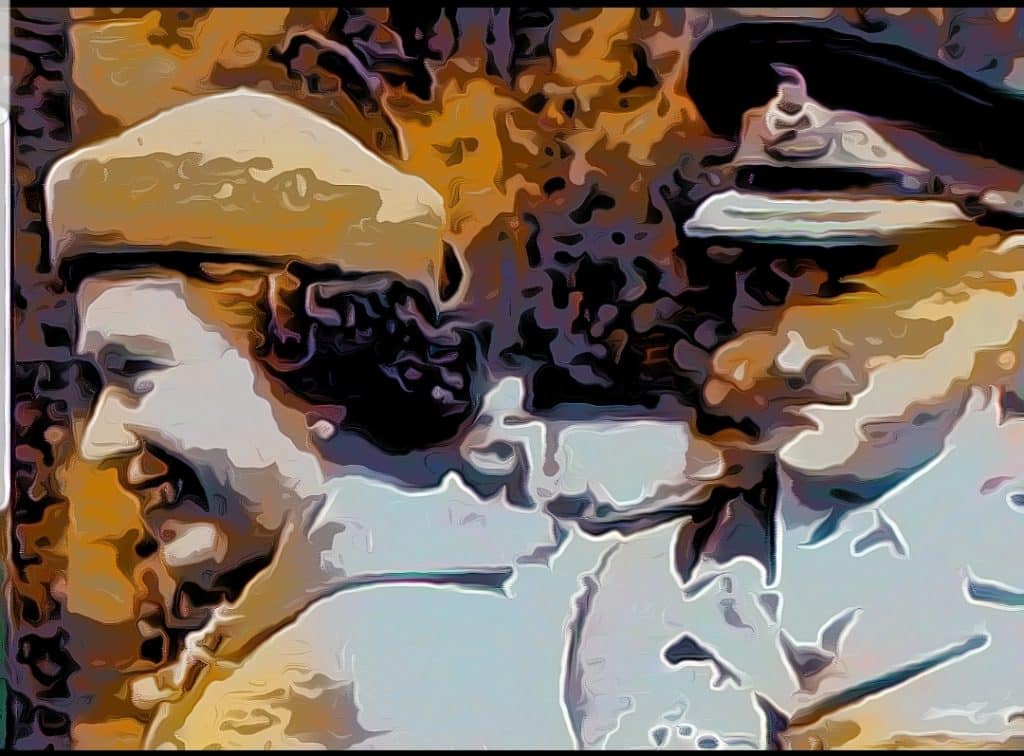
A Foul Unfinished Business. The shortcomings of, and plots against, Saville’s Bloody Sunday Inquiry.
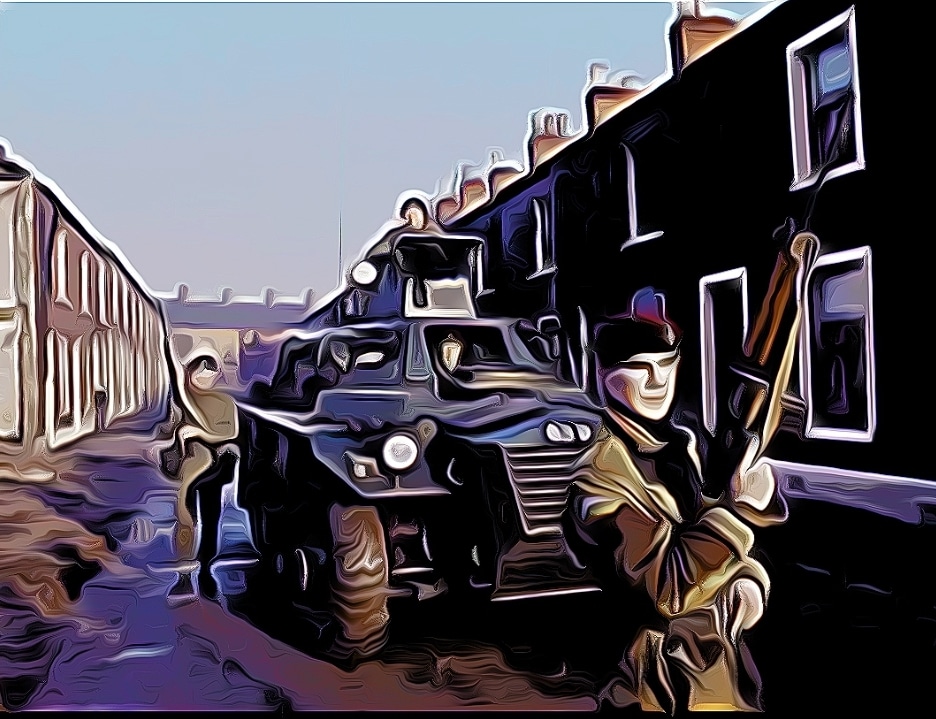

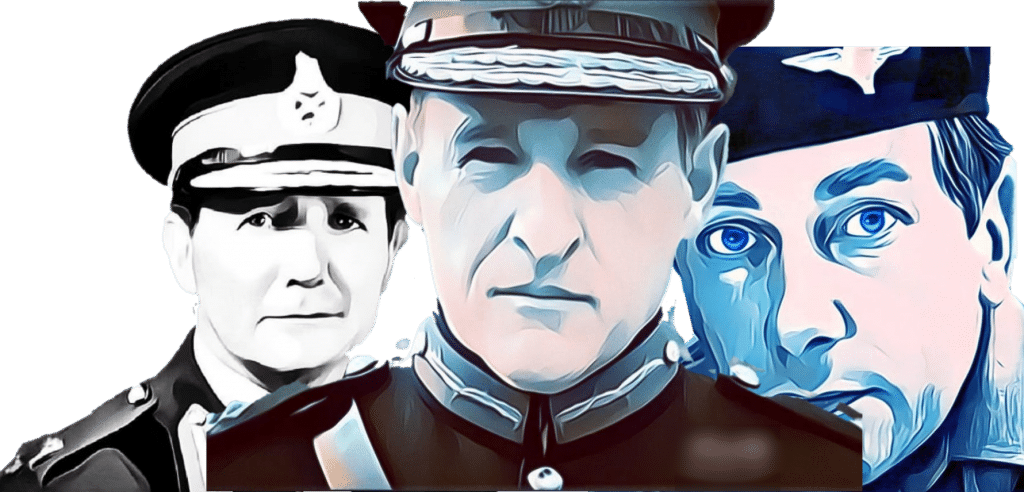
Soldier F, the heartless Bloody Sunday killer, is named.
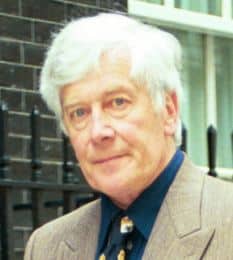

Brigadier Kitson’s motive for murdering unarmed civilians in Ballymurphy.




